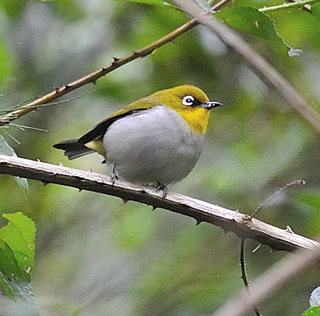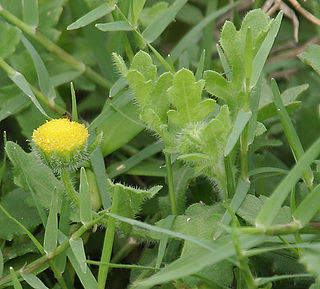
Cassia fistula, commonly known as golden shower, purging cassia, Indian laburnum, or pudding-pipe tree, is a flowering plant in the subfamily, Caesalpinioideae of the legume family, Fabaceae. The species is native to the Indian subcontinent and adjacent regions of Southeast Asia. It ranges from eastward throughout India to Myanmar and Thailand and south to Sri Lanka and southern Pakistan. It is a popular ornamental plant and is also used in herbal medicine. It is both the national tree and national flower of Thailand. It is the state flower of Kerala in India. It is the provincial flower of North Central Province in Sri Lanka.

The bare-bellied hedgehog, also known as the Madras hedgehog, is a species of hedgehog that is endemic to dry arid regions and scrubby jungles in southeastern India. As it was believed to be rare, it was formerly listed as Vulnerable by the IUCN. It is now known to be locally common in the Indian states of Andhra Pradesh and Tamil Nadu, resulting in its new listing as a species of Least Concern. Hedgehogs are protected species under schedule IV of Wildlife Protection Act (1972).

Eclipta prostrata commonly known as false daisy, yerba de tago, Gunta kalagaraku/Gunta galagaraku, Karisalankanni, and bhringraj, is a species of plant in the sunflower family. It is widespread across much of the world.

The Malagasy white-eye is a species of bird in the white-eye family, Zosteropidae. Found in the Comoros, Madagascar, Mayotte, and Seychelles, its natural habitats are subtropical or tropical dry forests, subtropical or tropical moist lowland forests, subtropical or tropical mangrove forests, and subtropical or tropical moist montane forests.

Mangifera indica, commonly known as mango, is a species of flowering plant in the family Anacardiaceae. Mangoes are believed to have originated from the region between northwestern Myanmar, Bangladesh, and India. It is a large fruit-tree, capable of growing to a height and crown width of about 30 metres (100 ft) and trunk circumference of more than 3.7 metres (12 ft).

Grangea is a genus of flowering plants in the family Asteraceae.

Stenocarpus cryptocarpus, commonly known as the giant-leaved stenocarpus, is a species of flowering plant in the family Proteaceae and is endemic to north Queensland. It is a tree with buttress roots at the base, simple, mostly elliptical adult leaves, groups of cream-coloured flowers and narrow oblong follicles.

Hygrophila auriculata is a herbaceous, medicinal plant in the acanthus family that grows in marshy places and is native to tropical Asia and Africa. In India it is commonly known as kokilaksha or gokulakanta, in Sri Lanka as neeramulli. In Kerala it is called vayalchulli (വയൽച്ചുളളി). In Tamil it is called Neermulli (நீர்முள்ளி).

Protea roupelliae is a species of Protea in the large family Proteaceae, and was named to commemorate Arabella Elizabeth Roupell (1817-1914) who spent two years in Cape Town and painted local flowers for her own pleasure.
Grevillea molyneuxii, commonly known as the Wingello grevillea, is a shrub which is endemic to the shrublands of New South Wales in Australia.

Tabernaemontana divaricata, commonly called pinwheel flower, crape jasmine, East India rosebay and Nero's crown is an evergreen shrub or small tree native to South Asia, Southeast Asia and China. In zones where it is not hardy it is grown as a house/glasshouse plant for its attractive flowers and foliage. The stem exudes a milky latex when broken, whence the name milk flower.
Cyperus zollingeri, commonly known as roadside flatsedge, is a sedge of the family Cyperaceae that is native to tropical areas of Australia, Africa and Asia.

Protea magnifica, commonly known as the queen protea, is a shrub, which belongs to the genus Protea within the family Proteaceae, and which is native to South Africa.

Protea sulphurea, also known as the sulphur sugarbush, is a flowering plant of the genus Protea in the family Proteaceae, which is only known to grow in the wild in the Western Cape province of South Africa. A vernacular name for the plant in the Afrikaans language is heuningkoeksuikerbos or Skaamblom.

Protea aspera, commonly known as rough leaf sugar bush or aardroos suikerbos, is a flowering shrub that belongs to the well-known Protea genus. The plant is endemic to South Africa and is found at Kleinrivierberg, Bredasdorpberg and Garcia's Pass.
Protea nubigena, commonly known as cloud sugarbush, is a very rare species of a flowering shrub belonging to the Protea genus. It is endemic to KwaZulu-Natal, South Africa and is found in the uKhahlamba Basalt Grassland within the Royal Natal National Park, near Mont-Aux-Sources, at an altitude of about 2,250 metres (7,380 ft) in well-drained, humus-rich soil on shaded slopes.
Helicia nilagirica is a tree of the Proteaceae family. It grows from Thailand across Mainland Southeast Asia to Yunnan, Zhōngguó/China and over to Nepal. It is a source of wood, a pioneer reafforestation taxa, and an ethnomedicinal plant.
Leucadendron loranthifolium, commonly known as the green-flower sunbush, is a flower-bearing shrub belonging to the genus Leucadendron and forms part of the fynbos. The plant is native to the Western Cape where it occurs in the Gifberg, Cederberg, Sandveld, and Hex River Mountains.

Paranomus longicaulis, commonly known as exploding baked apple and woolly sceptre, is a flower-bearing shrub that belongs to the genus Paranomus and forms part of the fynbos. The plant is native to the Western Cape where it occurs on the eastern Langeberg from Garcia Pass to the Attakwaskloof.

Leucadendron levisanus, commonly known as the Cape flats conebush, is a flower-bearing shrub that belongs to the genus Leucadendron and forms part of the fynbos. The plant is native to the Western Cape, where it occurs in the Cape Flats from Vishoek to Eerste River and Mamre. The shrub grows 2 m tall and bears flowers in October.
















